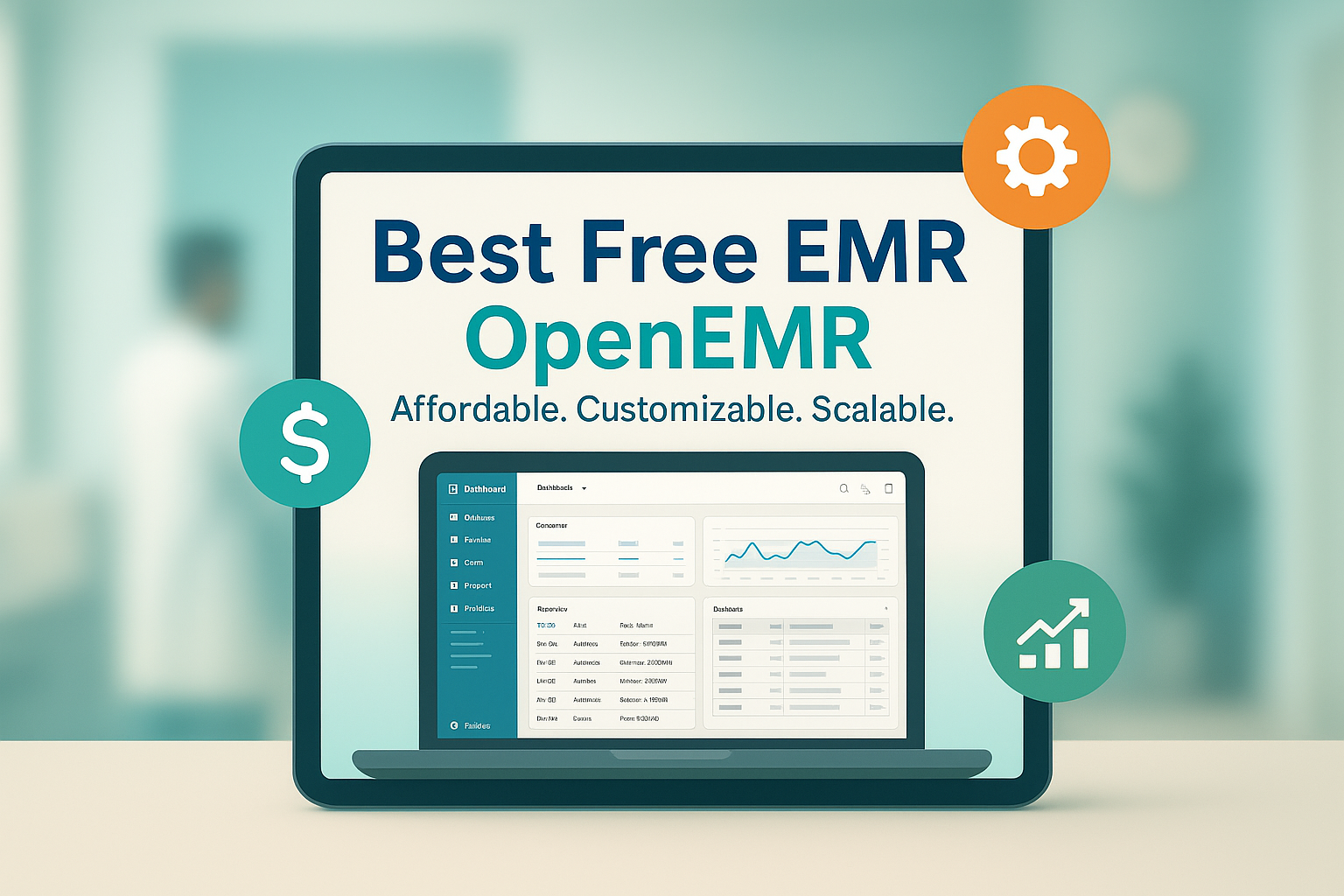How Care Management Software Supports Population Health Initiatives

Strong 8k brings an ultra-HD IPTV experience to your living room and your pocket.
In today’s healthcare landscape, it’s clear that individual patient care and broader population health are two sides of the same coin. With rising chronic disease rates, an aging population, and ongoing healthcare disparities, healthcare systems are increasingly focused on population health initiatives—strategies aimed at improving the health outcomes of specific patient groups or entire communities.
But to make meaningful strides in population health, healthcare providers need more than good intentions; they need tools that can handle complex data, support coordinated care, and engage patients in their health journeys. That’s where care management software comes in. This powerful tool enables healthcare providers to address population health challenges head-on, bridging the gap between individual care and community health.
Let’s explore how care management software plays a vital role in supporting population health initiatives, from data integration and preventive care to personalized patient engagement and coordinated interventions.
1. Data Integration for a Complete Picture of Population Health
One of the biggest challenges in population health is gathering and making sense of diverse health data from various sources. Population health initiatives require insights into demographics, patient histories, social determinants of health, and even environmental factors. Care management software pulls these data points together, integrating information from Electronic Health Records (EHRs), wearable devices, insurance claims, and other sources to create a holistic view.
This comprehensive data aggregation allows healthcare providers to identify trends and patterns, such as which patient groups are at higher risk for certain conditions or who may benefit from specific interventions. With care management software, providers can see the forest and the trees, pinpointing both community-wide issues and individual risk factors.
In a nutshell: Care management software helps providers answer the critical question: What’s really going on in this population? By offering a 360-degree view, it enables data-driven decisions that are essential for effective population health initiatives.
2. Supporting Preventive Care and Early Interventions
When it comes to managing population health, prevention is truly better than cure. Care management software makes it possible to track risk factors and implement preventive care strategies on a large scale. By using predictive analytics, care management software identifies patients who are likely to develop chronic conditions or other health issues. This allows providers to step in with preventive measures, reducing the need for more intensive care down the line.
For example, let’s say the software flags a group of patients as being at high risk for Type 2 diabetes. Providers can use this insight to launch targeted outreach efforts, offering lifestyle advice, diet counseling, and regular check-ups. By intervening early, care management software helps prevent conditions from escalating, which ultimately benefits both the patient and the healthcare system.
Think of it this way: Care management software serves as a safety net, catching potential health issues before they become full-blown crises. By supporting preventive care, it helps health systems focus on keeping patients healthy, rather than just treating them when they’re sick.
3. Facilitating Personalized Patient Engagement
Population health initiatives aren’t just about numbers—they’re about real people with unique needs and preferences. One-size-fits-all approaches rarely work, which is why personalized patient engagement is so crucial. Care management software allows providers to deliver tailored communication and resources, meeting patients where they are in their health journeys.
For instance, care management software can segment patient populations based on specific conditions, age groups, or risk factors, and then deliver customized health tips, reminders, or wellness plans. Patients with chronic illnesses might receive reminders to take their medication, while high-risk groups could be encouraged to come in for regular screenings.
By creating an ongoing, personalized dialogue, care management software solutions increases patient engagement, encouraging individuals to take an active role in their own health. And engaged patients are more likely to follow through with treatment plans, attend appointments, and maintain healthy behaviors.
Imagine this: It’s like having a personal health coach that knows what each patient needs, keeps them motivated, and nudges them to stay on track. Personalized engagement not only improves patient satisfaction but also contributes to better population health outcomes.
4. Coordinating Care Across Multiple Providers and Settings
Population health often requires a team approach. Patients with complex health needs may see multiple specialists, therapists, and care coordinators across various locations. Without coordination, critical information can slip through the cracks, resulting in redundant tests, inconsistent treatments, or even adverse events. Care management software acts as a central hub for care coordination, enabling seamless communication between healthcare providers.
With real-time updates and shared access to patient records, care management software ensures that every provider involved in a patient’s care is on the same page. If a patient with asthma visits their primary care provider, their pulmonologist and care coordinator are immediately in the loop. This helps reduce duplication of efforts, supports consistent care, and ultimately leads to better health outcomes.
Quick analogy: Care management software is like the conductor of an orchestra, ensuring that every musician (or in this case, healthcare provider) plays in harmony. It turns a potentially chaotic process into a well-coordinated, patient-centered care experience.
5. Enabling Population Health Analytics
Population health initiatives are only as effective as the insights they’re based on. Care management software provides robust analytics tools that allow healthcare providers to track health outcomes, evaluate the effectiveness of interventions, and measure progress over time. This helps healthcare organizations not only understand what’s working but also pinpoint areas for improvement.
With population health analytics, care management software can track key performance indicators (KPIs), such as readmission rates, vaccination uptake, or chronic disease management metrics. This data can be filtered by demographic groups, geographic locations, or risk levels, allowing for in-depth analysis that informs future interventions.
In essence: Analytics isn’t just a bonus feature; it’s the backbone of effective population health strategies. By leveraging the data from care management software, providers can refine their approaches and make informed adjustments that improve health outcomes on a broad scale.
6. Improving Health Equity by Addressing Social Determinants
Social determinants of health—factors like income, education, and access to healthy food—play a significant role in population health outcomes. Care management software allows providers to capture and analyze data related to these social determinants, helping identify patients who may face unique barriers to good health.
By understanding these underlying factors, healthcare providers can design targeted programs that address specific needs. For instance, if data reveals that a population struggles with food insecurity, providers might partner with local organizations to offer nutrition support. Similarly, care management software can highlight disparities in access to healthcare services, enabling providers to tailor interventions for underserved communities.
Simply put: Care management software allows providers to see the bigger picture, going beyond medical issues to address the root causes of health disparities. This focus on health equity is essential for any meaningful population health initiative.
7. Empowering Patients with Self-Management Tools
Empowering patients to take charge of their health is a cornerstone of population health. Care management software often includes self-management tools that patients can use to track their progress, monitor symptoms, or access educational resources. From setting medication reminders to recording daily steps, these tools make it easier for patients to manage their health on their own terms.
Self-management tools can be particularly helpful for patients with chronic conditions who need ongoing support but don’t always require in-person visits. By enabling patients to track their health metrics, care management software helps them stay engaged in their care, reducing the need for hospitalizations or emergency visits.
Think of it as a personal health app with a mission: It’s more than just a record-keeper; it’s a partner in each patient’s wellness journey, giving them the tools to succeed on their own.
Conclusion: A Catalyst for Population Health Success
Care management software is more than just a tool for managing individual patients; it’s a game-changer for population health. From data integration and preventive care to personalized engagement and improved health equity, this software enables healthcare providers to deliver coordinated, proactive care that benefits entire communities. As health systems continue to prioritize population health, care management software is proving to be an invaluable asset in meeting the needs of diverse patient populations.
For healthcare providers looking to make a significant impact on population health, investing in care management software isn’t just a smart choice—it’s a necessary one. By bridging the gap between patient care and public health, care management software is helping healthcare organizations build healthier, more resilient communities, one initiative at a time.
Explore more details on The Role of Technology in Mental Health Care
Note: IndiBlogHub features both user-submitted and editorial content. We do not verify third-party contributions. Read our Disclaimer and Privacy Policyfor details.







